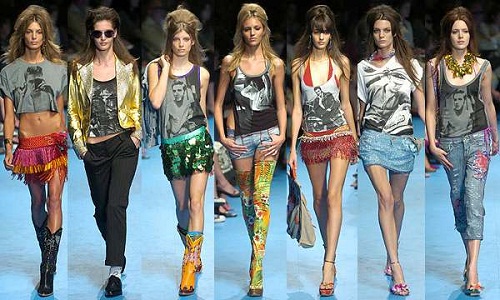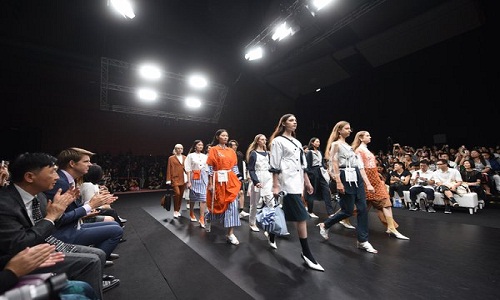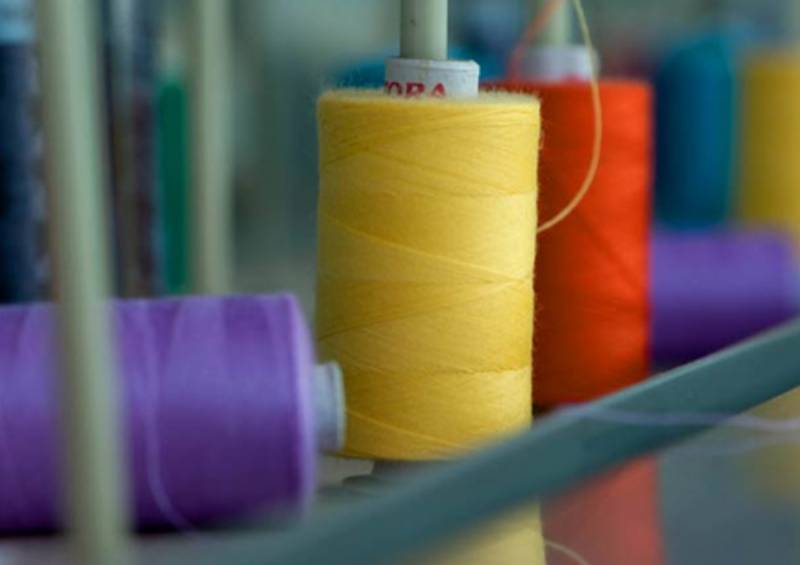FW
"While global fashion industry is a major business generator, it still hasn’t been able to gain strong IP rights and protection. Even the world’s biggest economy, the US hasn’t shown any willingness to address this issue. For some critics, fashion designs are not art, and therefore, do not require similar protection, or that current laws sufficiently protect apparel and luxury brands. Added to that, the rapid turnover of new fashion designs makes IP protection useless because registrations do not typically issue until after copied designs reach the market. The ease of pirating fashion designs has outperformed legal developments especially in the US, which requires fashion companies and designers to become more strategic in their approach to IP protection."
 While global fashion industry is a major business generator, it still hasn’t been able to gain strong IP rights and protection. Even the world’s biggest economy, the US hasn’t shown any willingness to address this issue. For some critics, fashion designs are not art, and therefore, do not require similar protection, or that current laws sufficiently protect apparel and luxury brands. Added to that, the rapid turnover of new fashion designs makes IP protection useless because registrations do not typically issue until after copied designs reach the market. The ease of pirating fashion designs has outperformed legal developments especially in the US, which requires fashion companies and designers to become more strategic in their approach to IP protection.
While global fashion industry is a major business generator, it still hasn’t been able to gain strong IP rights and protection. Even the world’s biggest economy, the US hasn’t shown any willingness to address this issue. For some critics, fashion designs are not art, and therefore, do not require similar protection, or that current laws sufficiently protect apparel and luxury brands. Added to that, the rapid turnover of new fashion designs makes IP protection useless because registrations do not typically issue until after copied designs reach the market. The ease of pirating fashion designs has outperformed legal developments especially in the US, which requires fashion companies and designers to become more strategic in their approach to IP protection.
Added to this, the ambiguities within copyright laws limit the protection of these designs, with different results in different countries. Fast fashion retailers have attempted to legitimise and defend their production and sale of copied designs. Forever 21 has been charged over 50 times by different designers and has never actually lost a case, instead resolving lawsuits in settlements. In 2017, the retailer found itself involved in three of the most significant fashion lawsuits of the year with adidas and Gucci, and it still has not been deterred from producing and selling its copies of fashion brands’ products. In fact, in March 2017 Forever 21 went on the offence, making the bold decision to file suit against adidas, calling the German sportswear brand a ‘bully’. Industry insiders and IP lawyers alike are keeping a cautious eye on these cases to see which way the IP pendulum may swing.
Copyright laws in different countries
James Donoian and Margarita Wallach, McCarter & English, LLP in their analysis stated that France is the only country providing full copyright protection to fashion designs. French copyright laws protect ‘any original work expressed in any form’. The French system provides copyright protection regardless of the medium of the work. In addition: ‘originators of all creations of form, even the most modest, receive a generous bundle of economic and moral rights for a term of life plus 50 years from creation.’ While copyright laws in the United States offer minimal protection. In the US, functional objects such as articles of clothing are not protected by copyright. However, under the concept of separability, copyright may protect authorship in pictorial, graphic or sculptural designs that can be identified separately from or exist independently of the utilitarian aspects of the article (ie, when the design can be separated from the garment and stand on its own as a copyrightable work).
protection to fashion designs. French copyright laws protect ‘any original work expressed in any form’. The French system provides copyright protection regardless of the medium of the work. In addition: ‘originators of all creations of form, even the most modest, receive a generous bundle of economic and moral rights for a term of life plus 50 years from creation.’ While copyright laws in the United States offer minimal protection. In the US, functional objects such as articles of clothing are not protected by copyright. However, under the concept of separability, copyright may protect authorship in pictorial, graphic or sculptural designs that can be identified separately from or exist independently of the utilitarian aspects of the article (ie, when the design can be separated from the garment and stand on its own as a copyrightable work).
Counterfeits
Fashion companies and designers should register their brand names as trademarks to deter counterfeiting. Ideally, one should prioritise those countries where the brand is or imminently will be sold or manufactured. While certain jurisdictions recognise common law rights, registration provides the most protection; having an already registered trademark means there is no battle over who has the rights. Filing a trademark early may also prevent trademark squatting. Not only has e-commerce attributed to growth in sales of copycat designs; fast fashion retailers are also constantly opening new physical stores. Research has shown that some e-commerce fast fashion retailers present an astounding 700 new styles per week.
Design protection
To address copying of designs more fully, some countries are leading the way by adopting a new type of protection, sometimes simply referred to as ‘design rights’ or the ‘design law’. In 2001, the European Union recognised an expansive definition of ‘design’: The appearance of a whole or part of a product resulting from the features of, in particular, the lines, contours, shape, texture and/or materials of the product itself and/or its ornamentation. This concept has since been adopted by Japan, Brazil, India and Israel.
Under EU law, design protection exists as a registered or unregistered right. A registered right protects original designs for a renewable period of five years, with a maximum duration of 25 years from the original filing date. An unregistered right protects designs from blatant copies for a maximum of three years from the date the design was first made available to the public. As a result, the new design laws offer protection from infringers to both registered and unregistered designs. In addition, both design rights and copyright can protect fashion designs in countries that allow for cumulative protection.
In Japan by comparison, design law is determined by the Design Act. Under the Design Act only registered designs are legally protectable. Protection may still be provided under unfair competition law if the infringing garment is a dead copy of the original garment and if the infringing copy would raise confusion with the original garment in the minds of consumers.
Turkey’s exports of textiles and raw materials increased by eight per cent in the first half of 2018.
Exports to Italy, the most important export market for Turkey in this sector, rose by 5.8 per cent. Exports of textiles and raw materials to Germany, the second important market, were up 8.3 per cent compared to the same period of the previous year. Exports to Bulgaria, the third major export market, declined by 13.7 per cent.
The most exported product in the first half of 2018 was woven fabrics. Woven fabric exports increased by 8.3 per cent compared to the same period of 2017. The second most exported product was yarn, which constitutes 18.1 per cent of total textile exports from Turkey. Exports of the third important product group, knitted fabrics, increased by 2.3 per cent. Turkey is one of the world's leading manufacturers of knitted fabrics. Fiber exports, the fourth most exported product group, increased by 16.9 per cent.
Turkey’s technical textile exports increased by 20.1 per cent.
As Turkey’s textile exports grow, the country’s textile manufacturing companies will have to upgrade their machinery, parts and components, as well as the manufacturing processes. Turkish textile companies are also being encouraged to consider technical collaboration with foreign partners.
Walls of Benin is a brand from Africa that makes sleepwear and loungewear for high-end shops in Europe. It uses fabrics like silk-and-cotton blends, silk and Tencel. Currently, Walls of Benin operates from Kenya and Rwanda and it is importing silk and Tencel from Portugal. The production is the first of its kind on the continent.
A thousand loungewear items are made a week using digital screen prints. The company helps create jobs by working with eucalyptus farmers and other suppliers who produce raw materials. Eucalyptus pulpwood is industrially spun to produce fabrics that are breathable and cooling. Kenyan cotton producers have got training from Walls of Benin to spin and twist fiber into yarn, weave and knit the yarn into fabric, and bleach, dye and print the fabric to create fashionable sleepwear.
The African Growth and Opportunity Act (Agoa), a US law that seeks to expand trade and investments with sub-Saharan Africa, gives duty-free access to the US for selected sub-Saharan African countries. Africa hopes to tap into the $12 billion US loungewear market through Agoa, which was recently extended to 2025.
The Southern African Clothing and Textile Workers’ Union (Sactwu), an affiliate of Cosatu, has revealed members of clothing industry in the metro areas of South Africa would receive a 7.5 percent wage increase and workers in the non-metro areas would receive an 8 percent package increase – of which 7.5 per cent will go on wages and 0.5 per cent to improve employer contributions to the provident fund.
This second-year wage increase would be in line with the consumer price index (CPI) as at November 2018, plus an additional 1 per cent. In the event of CPI plus 1 percent resulting in the total labour cost increase being less than the rand value increase for 2018, the adjustment would be the rand value equivalent of the 2018 total labour cost increase. The wage settlement was arrived after three rounds of ordinary negotiations, the declaration of a dispute and two conciliation sessions to attempt a settlement of the dispute.
The agreement covers more than 60,000 clothing workers, employed in 745 factories nation-wide. The wage increase component alone, combined for all the workers, will mean a total cash amount injection of R250m into the domestic economy, over the next year.
India is likely to outdo China in the textile sector. Contributing factors are cheap labor and modernization. With quality and skilled labor and machinery, India can easily overcome Chinese competition in the textile industry as labor costs in China are very high compared to India’s.
India aims at doubling the annual revenue from textiles by 2025. Foreign direct investment is being encouraged in the textile sector, which has the potential to create millions of jobs. High-tech machines which help deliver quality goods will enable India to reach the set targets at the production level. Tamil Nadu alone accounts for 39 per cent of the total textile production in the country. There are 4.13 lakh handlooms in Tamil Nadu providing employment to 6.08 lakh weavers while the 3.66 lakh power looms and 1,889 spinning mills provided employment to another 2.40 lakh people. Knitwear and woven garment production units provide employment to over five lakh people.
The textile sector in India is showing signs of recovery. The stressed advance ratio of the textile sub-sector has improved in March 2018 from the levels of September 2017. The sector was heavily hit by demonetization, GST, rupee appreciation and high domestic cotton prices. Packages and incentives are expected to create a strong turnaround in the textile and clothing sector.
In an assessment carried across the company last year, Canadian apparel manufacturer Gildan has reset its strategic priorities to fulfill its vision of ‘Making Apparel Better’, by working towards human and labour rights, health and safety along with water management, for long term success of its operations.
The assessment was done in partnership with an independent third party to analyse the social, environmental and economical issues most critical to its stakeholders. ‘Traceability’ and ‘chemical management’ were also indicted as the material issues of special concern for safety and sustainability.
With this, the company plans on focusing safe and ergonomics workplace, empowering women at work, respecting freedom of association, and ensuring fair wages for workers. It will also take steps to reduce the water usage, ensuring safe chemical management and addressing the climate change.
Highlighting its initiatives for last year, the company has decreased its water intensity by 10 per cent as a result of its refurbishment efforts which has resulted in the replacement of its jet dyeing machines at its textile facility in Honduras. Also, the company has recycled its 86 per cent of its waste.
As its environmental goals, the company has increased its green house gas emission intensity by 20 per cent per kg of product since 2015. Also, it has increased its energy intensity by 9 per cent and landfill waste intensity by 40 per cent, compared with its 2015 base year.
"The third edition of CENTRESTAGE, Asia's premier fashion event will be held from September 5 to 8, 2018 at the Hong Kong Convention and Exhibition Centre. Organised by the Hong Kong Trade Development Council (HKTDC), the event, since its inception, has consolidated Hong Kong's position as a fashion hub in Asia, offering an ideal platform for fashion brands and designers to gain local and international exposure. This year’s event will feature a record-breaking 220 fashion brands from 22 countries and regions. It will be visited by brands and designer labels from Austria, Germany, Poland and Switzerland. The theme will be ‘Tomorrow Lab’. It will feature three thematic zones: Allure: representing craftsmanship, refinement and elegance; Iconic: displaying contemporary, chic and avant-garde designs; and Metro: showcasing casual, youthful expressions of urban life."
 The third edition of CENTRESTAGE, Asia's premier fashion event will be held from September 5 to 8, 2018 at the Hong Kong Convention and Exhibition Centre. Organised by the Hong Kong Trade Development Council (HKTDC), the event, since its inception, has consolidated Hong Kong's position as a fashion hub in Asia, offering an ideal platform for fashion brands and designers to gain local and international exposure.
The third edition of CENTRESTAGE, Asia's premier fashion event will be held from September 5 to 8, 2018 at the Hong Kong Convention and Exhibition Centre. Organised by the Hong Kong Trade Development Council (HKTDC), the event, since its inception, has consolidated Hong Kong's position as a fashion hub in Asia, offering an ideal platform for fashion brands and designers to gain local and international exposure.
Theme for this edition
This year’s event will feature a record-breaking 220 fashion brands from 22 countries and regions. It will be visited by brands and designer labels from Austria, Germany, Poland and Switzerland. The theme will be ‘Tomorrow Lab’. It will feature three thematic zones: Allure: representing craftsmanship, refinement and elegance; Iconic: displaying contemporary, chic and avant-garde designs; and Metro: showcasing casual, youthful expressions of urban life.
CENTRESTAGE 2018 will hold around 20 fashion shows over four days. These will include three internationally celebrated Asian fashion labels who will present their latest 2019 Spring/Summer collections at the opening gala show CENTRESTAGE Elites: Japanese avant-garde streetwear label Facetasm by Hiromichi Ochiai, Hong Kong ready-to-wear womenswear label Idism by design duo Cyrus Wong and Julio Ng, and Chinese luxury womenswear label Ms Min.
present their latest 2019 Spring/Summer collections at the opening gala show CENTRESTAGE Elites: Japanese avant-garde streetwear label Facetasm by Hiromichi Ochiai, Hong Kong ready-to-wear womenswear label Idism by design duo Cyrus Wong and Julio Ng, and Chinese luxury womenswear label Ms Min.
The show will include over 20 fashion shows that will display latest collections by exhibiting brands. The "Fashion Hong Kong Runway Show", on Sept 5, 2018, will feature eight Hong Kong designer labels including Anveglosa, Doriskath, Harrison Wong, House of V, Loom Loop, Maison Vermillion, Miking NG and Methoddolgy.
Design display
Online fashion hub Fashionally will feature its Fashionally Collection #12 fashion show, where 10 rising local fashion designers will highlight Hong Kong's design prowess. Moreover, the Fashionally Presentation will spotlight three budding Hong Kong labels, Tak Lee, Redemptive, and YLYstudio. Each of them will stage an unconventional hybrid presentation combining a fashion show and theatrical performance for their 2019 Spring/Summer collection.
Excellence rewarded
Another highlight of the event will be the finals of The Hong Kong Young Fashion Designers' Contest 2018 (YDC) where 16 shortlisted candidates will compete for five awards including the New Talent Award and Best Footwear Design Award. Furthermore, Redress, a non-government-organisation promoting environmental fashion, will present the Redress Design Award, the world's largest sustainable fashion design competition, on September 6. The Knitwear Innovation and Design Society will present the Knitwear Symphony 2018 & the 8th Hong Kong Knitwear Designers' Contest on September 7 to promote Hong Kong's knitwear design and wool manufacturing capabilities.
A meeting of minds
International style masters and industry experts will share their perspectives on industry trends and the future of fashion during the Meet the Visionaries Series and Trend Talk Series of seminars. Meet the Visionaries Series seminar on Sept 6, 2018 will address the theme "In Conversation with the Asian Creative Forces Shaping the International Fashion Scene". On 7 Sept, at another seminar of the series, internationally acclaimed fashion designer Martine Rose will share insights and anecdotes from her career.
The Fashion Summit, the first large-scale summit in Asia on sustainability in fashion, will be held on the theme "Circular Economy". A panel comprising leading academics, key industry players, NGOs, media, decision makers and leaders from various disciplines and across geographical boundaries will discuss sustainability solutions for fashion.
In collaboration with over 100 partners, including retail stores, hotels and institutions, Hong Kong in Fashion will feature more than 90 entertaining and engaging events including exhibitions, workshops and dance performances, as well as promotions featuring themed afternoon tea sets and giveaways.
Metakeys: Centrestage 2018, HKTDC, Fashion Summit,Fashion
The value of Japanese apparel imports fell 7.97 per cent in May 2018 as compared to April 2018. The value of knitted apparel imports and woven clothing imports too plummeted in May as compared to April. The fall was mainly due to declining value of the yen.
However, cumulatively during January to May, Japan’s import value surged by 2.46 per cent. Bangladesh and Vietnam continued their robust performance in their respective apparel exports to Japan during the first five months of the year. Bangladesh’s apparel exports jumped 13.64 per cent while Vietnam’s shipments to Japan surged 14.81 per cent.
India’s apparel exports to Japan rose 9.54 per cent in the said period. However, India’s knit clothing exports to Japan fell 1.11 per cent. Japan has signed an FTA with the EU, which is said to have made imports cheaper from the region. The deal removes EU tariffs of 10 per cent on Japanese cars and three per cent on most car parts. It would also scrap Japanese duties of some 30 per cent or more on EU cheese and 15 per cent on wines, and secure access to large public tenders in Japan. Europe’s food sector is one of the biggest winners from the deal.
Pascal Perrier has been appointed the new CFO of La Perla. He will spearhead the growth of the label launched last February by Dutch investment company Sapinda. A French resident, Perrier is a graduate in veterinary medicine and agronomy from Toulouse and a specialist in International Marketing from the HEC business school in Paris. He has thirteen years of experience at Burberry, nine of which as CEO of the Asia-Pacific region, as well as at Balenciaga, Saint Laurent and Céline.
During these 13 years, Perrier played a key role in building the Burberry brand, which has a market capitalisation of $11 billion, and whose most important business region is Asia-Pacific. To further fuel La Perla’s growth,Sapinda appointed Alessandra Bertuzzi as the lingerie label’s Creative Director. Bertuzzi has over 28 years of experience at La Perla, and took over from Julia Haart, the Creative Director from May 2016.
Sapinda expects La Perla to grow in all its markets. The Italian label operates 140 monobrand stores worldwide, of which 50 per cent are in the EMEA region, 30 per cent in the Americas and 20 per cent in Asia.
The Philippine garment and textile industry is undertaking strategic initiatives, projects and partnerships involving key players, manufacturers, and stakeholders. The garment and textile sector was considered a sunrise industry during the 1990s. But the end of the Multi-Fiber Agreement, which granted preferential tariffs to the country’s exports of garments and textiles, saw a decline in the sector’s general performance. As a result, garment and textile enterprises in the Philippines which relied on quotas underwent difficulties leading to closure of factories and downsizing.
The MFA, which prescribed quota allocations in identified textiles and garments that are for export to developed countries from developing countries like the Philippines, India, and Vietnam, was replaced by the Agreement on Textiles and Clothing in 1995.
The Philippine garment and textile industry trade has steadily and continuously declined between 2005 and 2011. Its garment export performance dropped by 39 per cent. At present, 39 per cent of the industry is composed of exporters, and 61 per cent is subcontractors, which include small contractors catering to garment exporters, or backyard businesses. Employment under the textile and garment industry in the country is at 1,37,000 and 4,22,000 respectively.
The Philippine garment and textile industry is gearing up to jumpstart its resurgence and gain back its reputation as a competitive player in the domestic and international markets.












